Welcome to the lush, vibrant world of gardening, where every drop of water counts and timing is everything! Whether you’re just dipping your toes into the soil or you’ve already got a green thumb, understanding the best time to water your garden plants can make all the difference between a flourishing Eden and a parched plot. Imagine the joy of stepping outside to a garden that thrives, its leaves glistening with morning dew, each plant standing tall and proud; it’s the reward that every gardener dreams of.
This guide is your trusty companion, offering valuable insights that cater to both beginners eager to nurture their first seedlings and seasoned pros looking to refine their watering techniques. By mastering the art of timing, you’ll discover practical benefits such as healthier plants, reduced water waste, and a more fruitful garden. Dive in with enthusiasm and confidence, knowing that these tried-and-true techniques will empower you to nurture a garden that not only survives but truly thrives.
Soaker Hoses (Even Water Distribution)
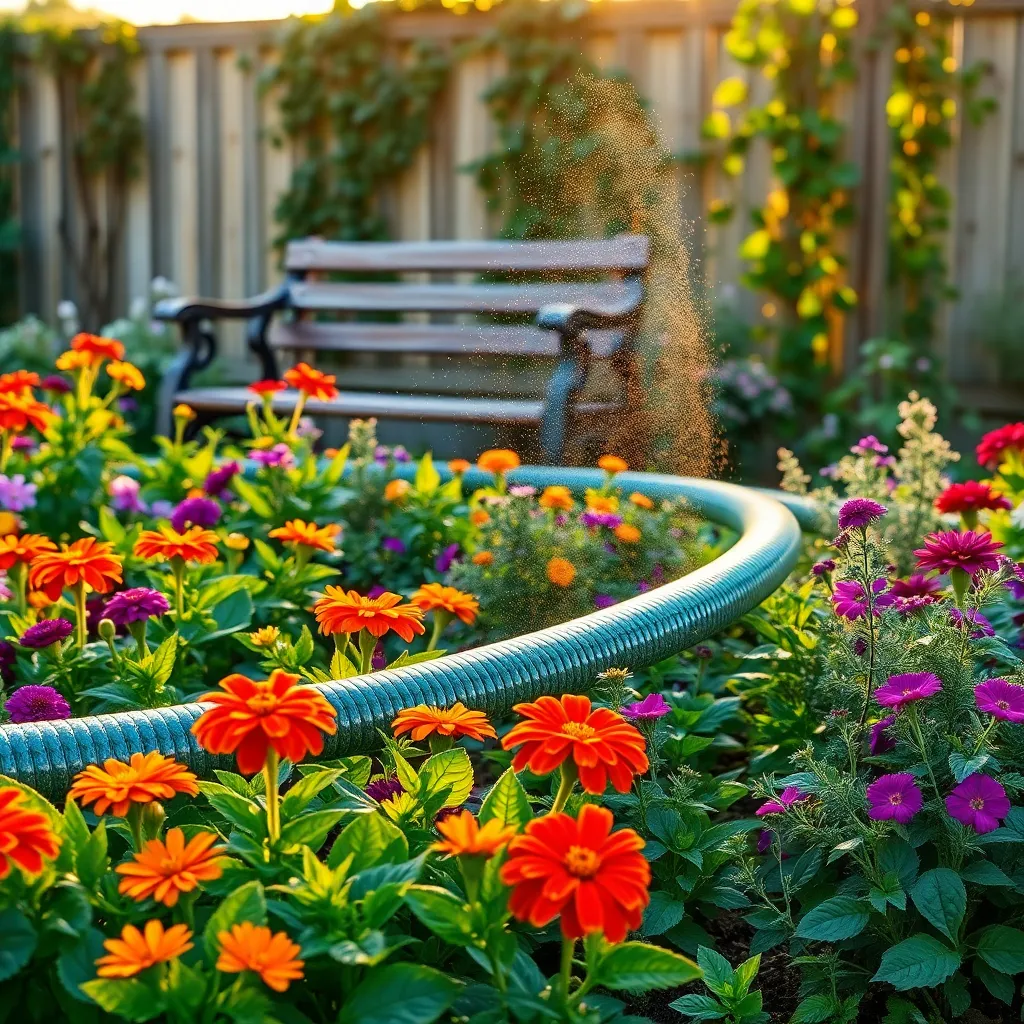
Soaker hoses are an excellent tool for ensuring even water distribution across your garden. They allow water to seep directly into the soil, minimizing evaporation and ensuring that plants receive the moisture they need.
By placing soaker hoses on the soil surface and covering them with mulch, you can enhance water retention and protect the hose from UV damage. This setup not only conserves water but also reduces the growth of weeds, as the moisture is concentrated at the root level.
For beginners, it’s important to lay out the soaker hose in a serpentine pattern around plants to maximize coverage. Ensure the hose is placed at least 2 inches away from the base of each plant to prevent over-saturation at the roots.
Experienced gardeners often use a timer to automate watering schedules, ensuring consistency and preventing overwatering. Set the timer to water early in the morning when evaporation rates are low, promoting deep root growth and healthier plants.
Moisture Meters (Precision Timing)
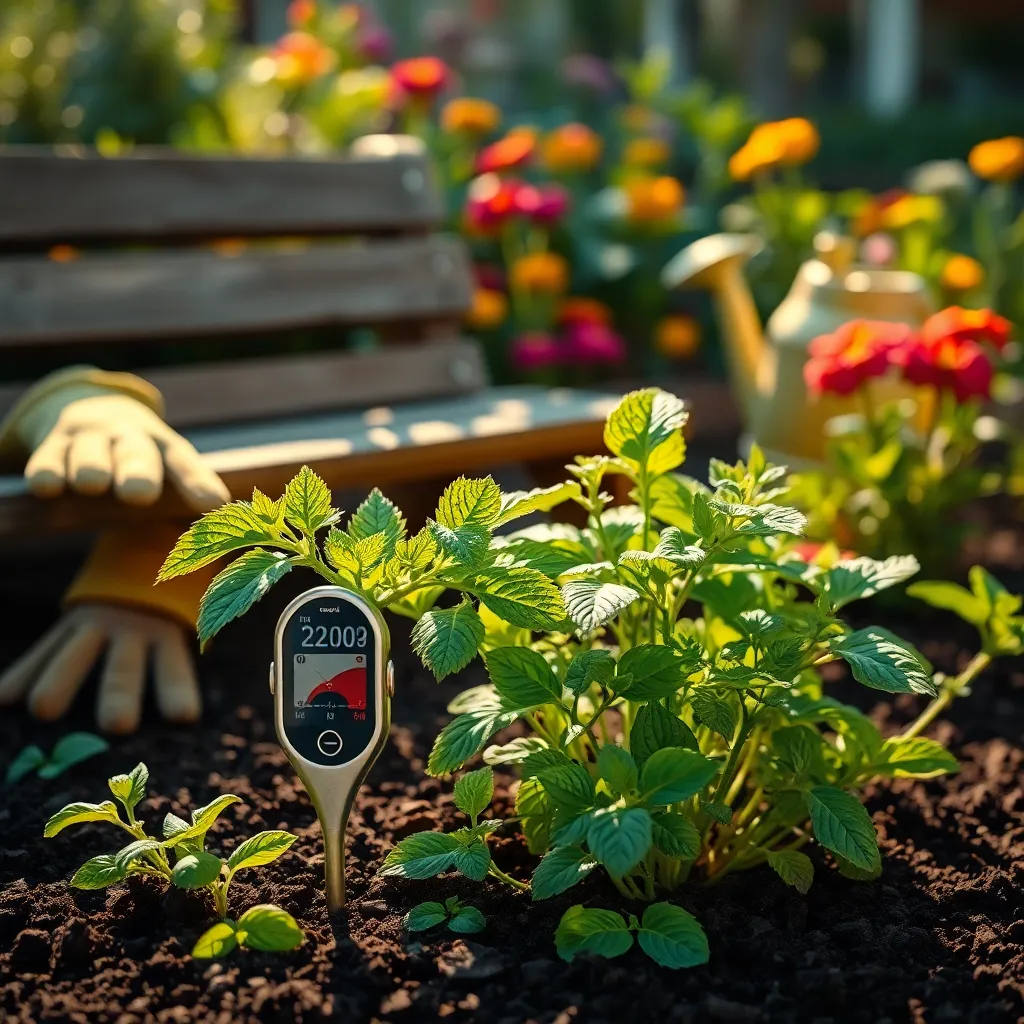
Moisture meters are a gardener’s secret weapon for achieving the perfect watering schedule. These handy devices help you determine the exact moisture level in your soil, so you’re not left guessing when it’s time to water.
By using a moisture meter, you can prevent both overwatering and underwatering, which are common issues for many gardeners. Place the probe into the soil near the root zone, and within seconds, you’ll receive an accurate reading of the soil’s moisture content.
For beginners, moisture meters take the guesswork out of watering, ensuring your plants receive the right amount of hydration. Advanced gardeners will appreciate the precision these tools offer, allowing them to fine-tune their watering schedules based on specific plant needs.
Most moisture meters are simple to use and require no maintenance, making them a practical addition to any gardener’s toolkit. For the best results, use the meter at different soil depths and at various times of the day to understand your garden’s watering needs better.
Mulching Techniques (Retain Soil Moisture)
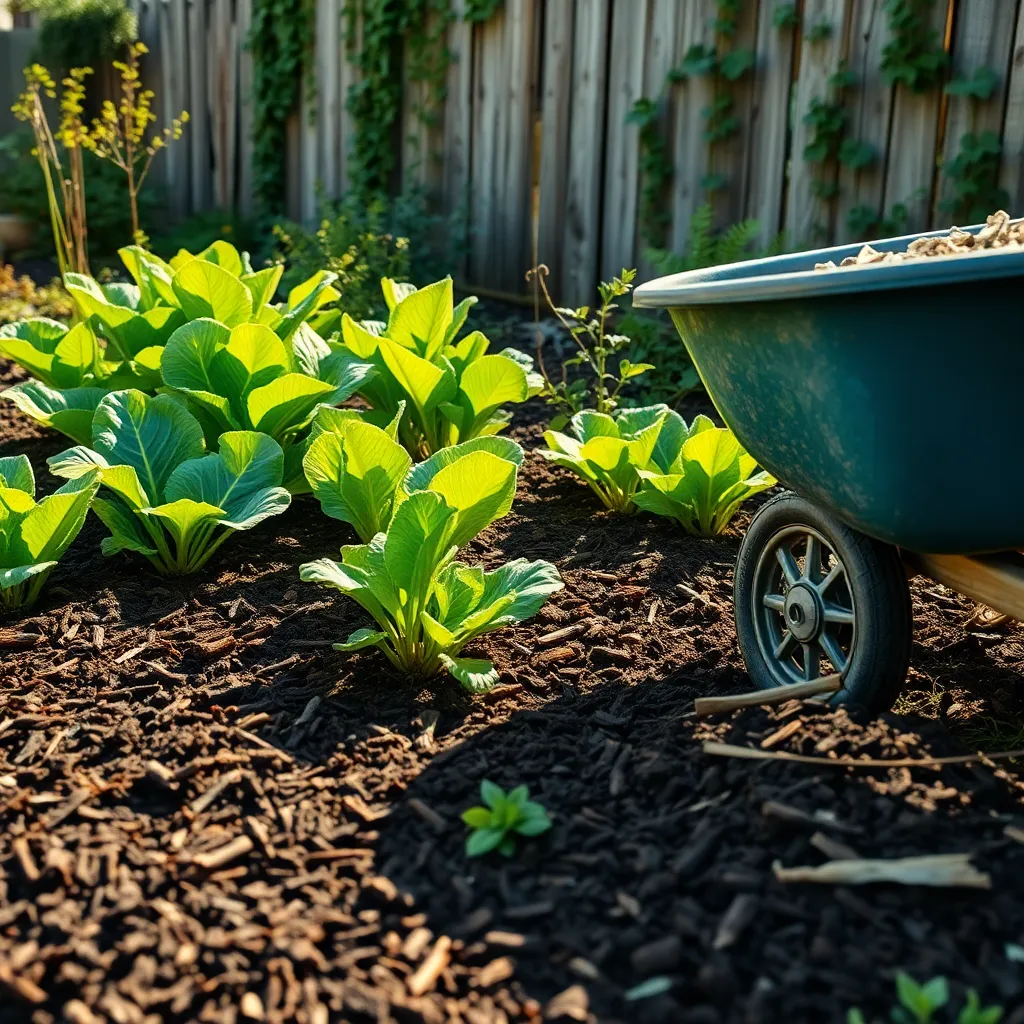
Mulching is a highly effective technique to help retain soil moisture, making it an essential practice for gardeners looking to optimize their watering schedule. By covering the soil with a layer of organic material, such as straw, wood chips, or shredded leaves, you can significantly reduce evaporation and keep the roots cooler.
To get started, apply a mulch layer that is about two to three inches thick around your plants, ensuring you leave a small gap around the stems to prevent rot. This practice not only conserves moisture but also discourages weed growth, which can otherwise compete with your plants for water.
Different types of mulch can provide varying benefits, so consider your plant type and garden conditions when selecting the material. For instance, bark mulch is ideal for ornamental gardens, while straw is excellent for vegetable patches due to its lighter texture and ease of spreading.
Advanced gardeners may experiment with living mulches, such as low-growing cover crops, which can add nutrients to the soil while also preserving moisture. Regularly replenishing your mulch as it decomposes is crucial to maintain its effectiveness throughout the growing season.
Automatic Sprinkler Timers (Customizable Scheduling)
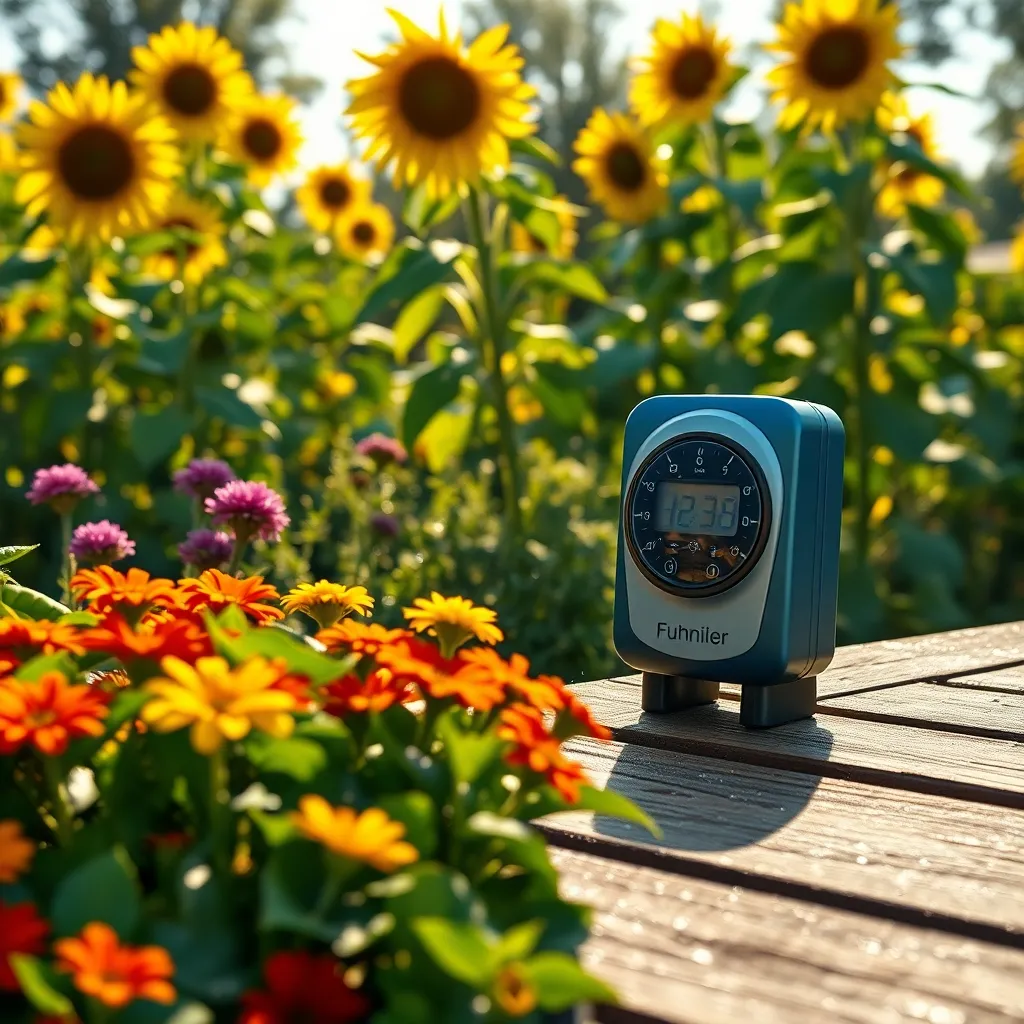
Automatic sprinkler timers are a game-changer for maintaining a consistent watering schedule, especially during hot summer months. They allow you to set precise times for watering, ensuring your plants get the right amount of moisture without over or under-watering.
For beginners, start by setting your timer to water early in the morning when evaporation rates are low. This helps maximize water absorption and minimizes fungal diseases that can occur if plants remain wet overnight.
Experienced gardeners can take advantage of the customizable scheduling features to tailor watering to specific plant needs. For instance, drought-resistant plants may require less frequent watering compared to thirsty vegetables like tomatoes and cucumbers.
Consider soil types when setting your schedule; clay soils retain moisture longer, while sandy soils dry out quickly and may need more frequent watering. By adjusting your sprinkler timer based on these factors, you can optimize plant health and water efficiency.
Early Morning Watering (Optimal Absorption)
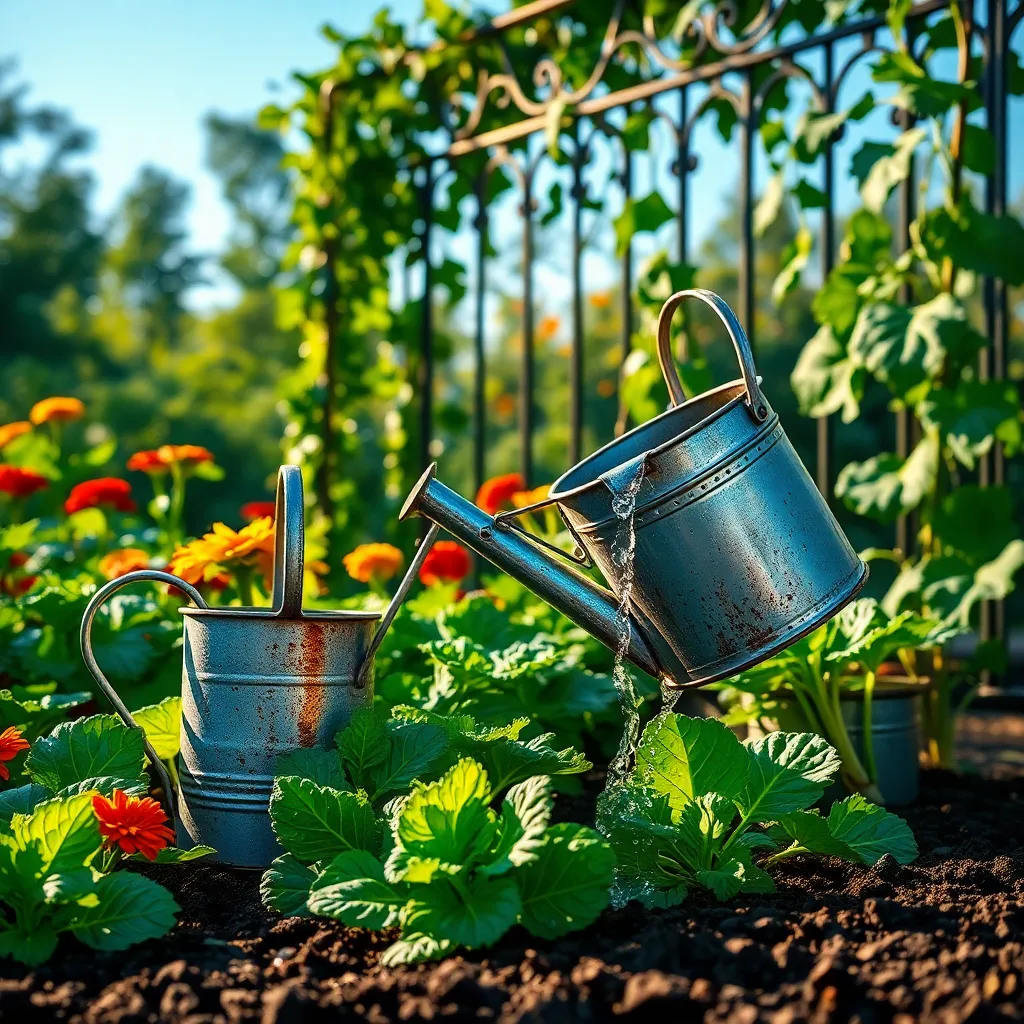
Watering your garden in the early morning is recommended for optimal plant health and water efficiency. This practice allows water to soak into the soil before the sun’s heat causes evaporation, ensuring that plants have access to moisture when they need it most.
Plants absorb water more effectively during the cooler morning hours, which helps them maintain hydration throughout the day. Ensuring the soil is moist but not waterlogged is crucial, as this can prevent root rot and other issues related to overwatering.
For beginners, using a simple moisture meter can help determine the right water levels, especially in clay or sandy soils where retention varies. More experienced gardeners might consider adjusting watering schedules based on plant type, as some plants require more frequent watering than others.
To maximize absorption, it’s beneficial to water at the base of each plant, focusing on the root zone rather than the foliage. Drip irrigation systems can be particularly effective for this purpose, delivering water directly where it’s needed without waste.
Conclusion: Growing Success with These Plants
In nurturing the garden of relationships, timing is crucial, just as it is when watering plants. We’ve explored five key concepts: understanding your partner’s needs, watering the relationship with regular communication, nourishing it with acts of kindness, giving it space to grow independently, and tending to it consistently without overbearing. These elements are vital for thriving partnerships.
As an immediate next step, take a moment today to express genuine appreciation to your partner, nurturing your bond just like watering your garden at the optimal time. This simple act can refresh and strengthen your connection, setting the stage for continued growth.
Remember, the journey to flourishing relationships is ongoing. Bookmark this article now to revisit these insights whenever you need a gentle reminder of how to cultivate love and connection effectively. With dedication and mindful care, your relationships can bloom beautifully, just like a well-tended garden. Embrace this opportunity to sow seeds of love, and watch as they blossom into a future filled with joy and harmony. Save this guide as your go-to resource for relationship success and empowerment.

